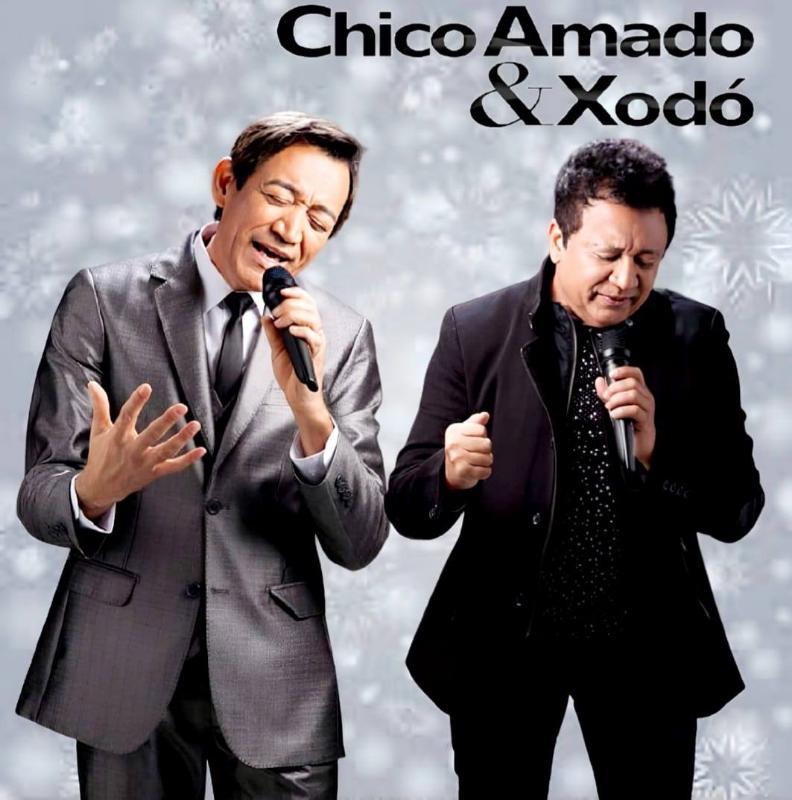Chico Amado e Xodó
 BRALatin, Sertanejo
BRALatin, Sertanejo

 BRALatin, Sertanejo
BRALatin, SertanejoFamous Brazilian musicians Chico Amado e Xodó are renowned for their mesmerizing musical style, which combines classic Latin rhythms with Sertanejo, a well-liked subgenre in the nation. Brazilian culture is heavily influenced by the duo's music, which honors the nation's rich musical tradition while infusing contemporary elements that keep the music sounding current and relevant.
The music of Chico Amado e Xodó is distinguished by upbeat rhythms, emotional melodies, and sentimental lyrics that appeal to the listener's emotions. Their distinctive vocal harmonies and use of traditional instruments like the accordion and guitar give their music an authentic feel that sets them apart from other performers in the genre. Their music honors life, love, and the magnificence of Brazilian culture.
In conclusion, Chico Amado e Xodó are genuine ambassadors of Latin and Sertanejo music, exhibiting the variety and depth of Brazilian music to audiences all over the world. Their music is a testament to the ability of music to traverse boundaries and bring people of all backgrounds and tongues together.
Brazilian musicians Chico Amado e Xodó are well-known for their Latin and Sertanejo music. They are most known for the songs "Mudanca," "Tem Alguem no Seu Lugar," "Recordacao," "Bebo e Choro," "Volta pra Casa," "Telefone no ar," "Aceita Que Doi Menos," "Ta Dificil De Voltar," "Meu Paraiso," and "Cordao de Ouro - Ao Vivo."
Their music is the ideal fusion of Latin rhythms and traditional Brazilian country music. A popular song among the crowd, "Mudanca" displays their individuality and musical prowess. Another well-known song that captures the feelings of a broken heart is "Bebo e Choro".
With a blend of danceable rhythms and lyrical lyrics, Chico Amado e Xodó's music has a way of bringing listeners to the heart of Brazil. They have been using their music to amuse audiences for many years, and their fame is only increasing. It is easy to understand why they are one of Brazil's most adored musical groups with their distinctive sound and appealing tunes.
The dynamic Latin and Sertanejo music combo from Brazil known as Chico Amado e Xodó has been working hard to produce new music for its followers. Their most recent album, "Romanticos Demais," which was released in 2019, has songs like "Feliz ou Triste" and "Coracao Bandido" and highlights their distinctive sound. The CD has the ideal balance of lively songs that will keep you tapping your feet with love ballads.
Additionally to their most recent album, Chico Amado e Xodó released a brand-new song in 2022 called "Arquivo do Tempo." The song is a melancholy ballad that narrates the tale of a love that was lost and the memories that still exist. This song is a must-listen for any lover of Latin and Sertanejo music because of the duo's sultry voices and heartfelt performance.
The album "Raizes," which was released by Chico Amado e Xodó in 2019, is another recent release. The album honors the origins of Sertanejo music with songs like "Saudade de Itapua" and "Festa na Roca." The CD celebrates Brazil's rich musical history and demonstrates the duo's artistic diversity.
Overall, Chico Amado e Xodó's most recent albums are proof of their skill as musicians and commitment to their art. The dynamic combo will soon release more fantastic songs, which fans may anticipate.
Throughout his career, Chico Amado e Xodó has worked with numerous musicians, but some of his most significant partnerships have been with musicians from his native Brazil. The song "Tem Alguem no Seu Lugar" with Joao Carreiro and Capataz is one famous example of a cooperation. The song's cheerful tune and memorable lyrics make it a classic example of Sertanejo music. The song is enhanced by Carreiro and Capataz's distinctive styles, which each offer a distinct flavor to the composition.
On the songs "Cordao de Ouro - Ao Vivo" and "Borboleta Colorida - Ao Vivo," Trio Parada Dura and I worked together in another significant project. The tracks demonstrate the band's skill in fusing contemporary styles with traditional Sertanejo music. The end result is a novel approach to the genre that will interest both traditional and modern enthusiasts.
Two other projects that highlight Chico Amado e Xodó's artistic flexibility are "Deixa Ela Chorar" with Gino & Geno and "Bebo e Choro" with Rio Negro & Solimoes. Both songs have a more classic Sertanejo flavor, and the performers expertly merged their respective approaches to produce something wholly original.
Overall, Chico Amado e Xodó's associations with other musicians have aided in extending the appeal of Sertanejo music and bringing new listeners to it from all over the world. Whether working with artists from other nations or fellow Brazilians, Chico Amado e Xodó's music has always been about uniting people and recognizing the transformative power of music.